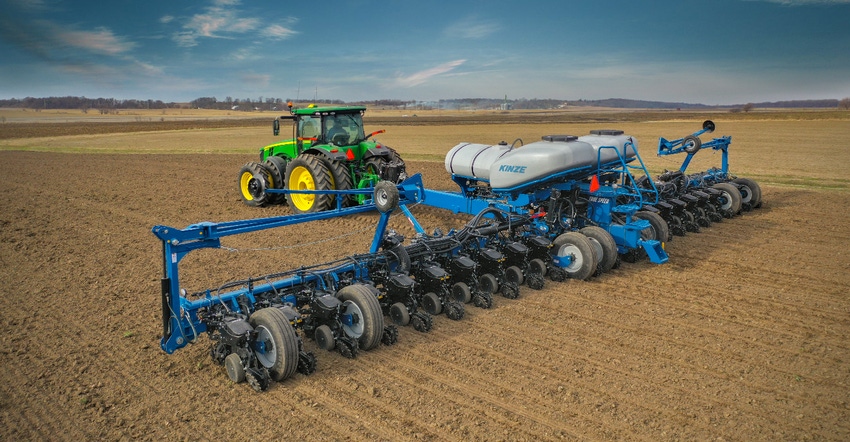
When it comes to farming, Brad Niensteadt says the planter is the most important piece of equipment on the farm.
“If you don't get the seed in the ground, you don't need a sprayer and a combine and everything else on down the line,” he says, “so it's critical to spend a lot of time and extra time on the planter to make sure that everything is good to go, not only for good performance, but for efficiency.”
No matter how advanced the planter is, Niensteadt, a senior product specialist for Kinze Manufacturing, says farmers still must pay attention to the basics. “You need to go through those mechanical pieces of disk-opener blades and gauge wheels," he says, "making sure nothing's loose or missing.”
Visual observations
Adam Daugherty, technical communicator with Ziegler Ag Equipment located in Chillicothe, Mo., says many farmers are comfortable inspecting planters before a season. “They know what to look for,” he notes.
But sometimes it is such a routine that they miss some important steps. He and Niensteadt offer a refresher on planter inspection. Here is a checklist:
☐ Hydraulic hoses. Daugherty says farmers should inspect hydraulic hoses for damage. “If they’ve been laying in the dirt for a time, the hoses may be leaking,” he notes. He likens them to tires. Over time, they become weathered and worn. Better to find leaks in the farmyard than the crop field, he adds.
☐ Bearings and bushings. Each row unit needs the bearings and bushings checked. They will need oil. Farmers can tell if a bearing is wearing out because there is excess movement when it is pushed from side to side. An operator’s manual is the best place to find wear specs.
☐ Inspect row units and attachments. These include disk-opener blades and no-till coulter measurements, Niensteadt says. Replace if their diameters are 14.5 inches or less. Look at the closing wheel bearings alignment and condition, and gauge wheel adjustment and wear. “To ensure best emergence, make sure worn and damaged parts have been taken care of and the individual row adjustments are set correctly,” Daugherty adds.
☐ Air hoses. Farmers using a vacuum system should do a trial run to ensure there are no leaks. “They want to check all their hoses, from their pump, to their fans, to their row units to make sure they don’t have cracks and leaks that will affect its operation,” Daugherty explains.
☐ Monitor seed meters. Before planting season, inspect the seed disks, singulator brush, crowder brush, wall brush and air inlet screens. Identify common wear points and clean or replace parts as needed, Niensteadt says. To ensure your meters deliver optimal performance, consider taking them to a certified dealer for seed meter testing.
☐ Pinch points. Farmers should fold and unfold the planter multiple times to make sure there is not a pinch point on the harnesses or hoses.
☐ Cylinders check. Lift and lower the planter, what Daugherty refers to as “phasing the cylinders,” to make sure all wheels are raising the same way.
☐ GPS calibration. “GPS is a big one that farmers tend to overlook,” Daugherty says. “They need to be calibrated right.” Farmers can calibrate in the field, but it also can be done in the shop driveway. “They can mark and pull in one spot and turn around and pull into the exact same spot, so it knows which way it is headed,” he adds.
☐ Safety devices. Last, but certainly not least, ensure that safety devices are working properly. Niensteadt says that includes checking whether the safety chain is properly installed, safety lights work and the Slow Moving Vehicle sign is attached, clean and visible.
Dry run
The type of planter dictates just when and where you can perform some of the tasks above.
Niensteadt notes that ground drive planters require a farmer get in a tractor and drive to make sure the meters are turning. “The beauty of more advanced planters and specifically electric drivers is that farmers can almost run that planter stationary in the field and check that everything is working,” he says. “So, it allows you to get a generic run-through before you ever go to the field.”
Ultimately, for many planter problems, Daugherty says the operator’s manual is a farmer’s friend. However, he adds that with today’s new technology, farmers should not be scared to call somebody for help. “We are here to walk you through it or come out and inspect," he says.
About the Author(s)
You May Also Like






